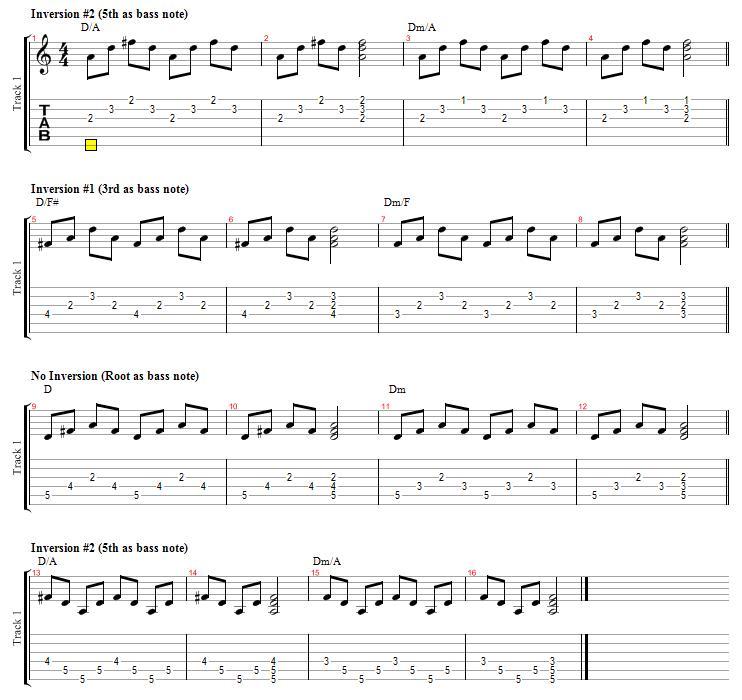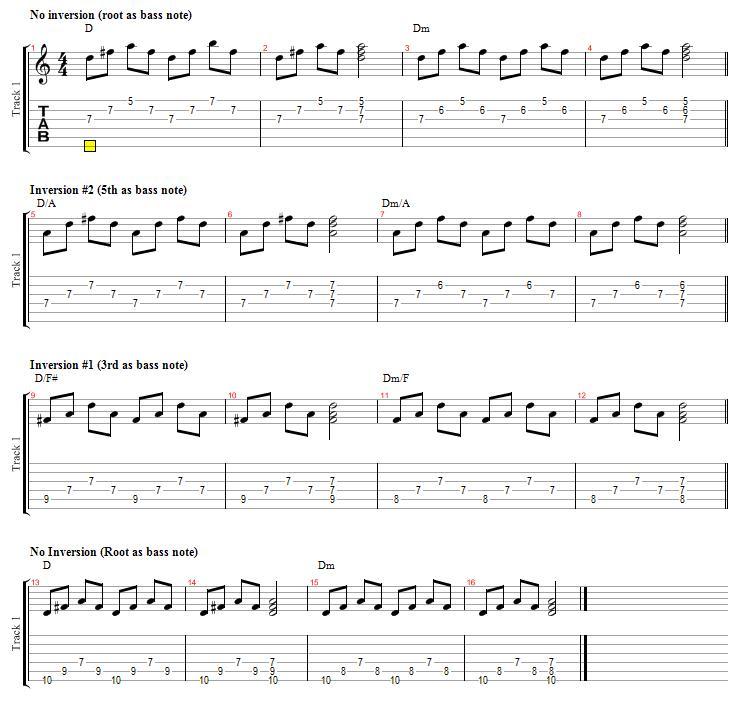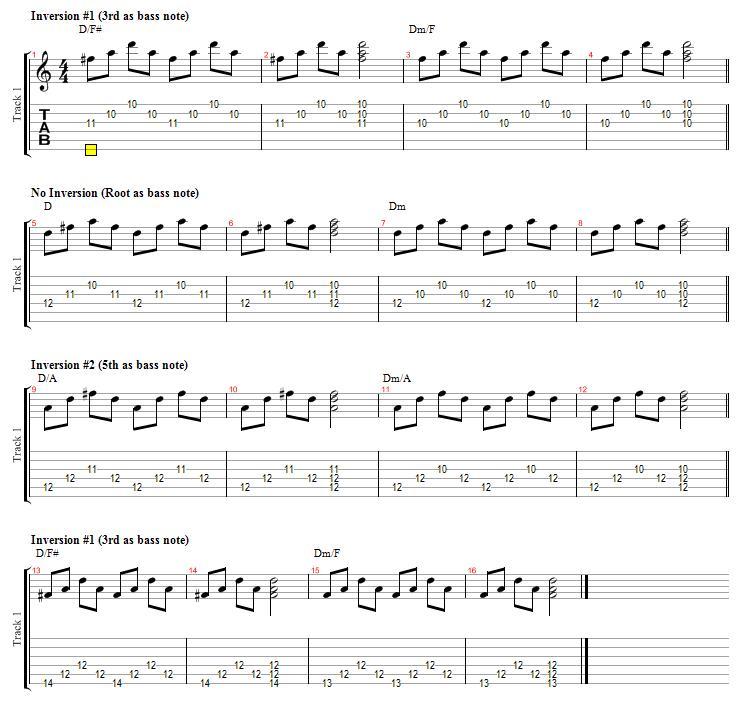Velvet Roger Triads - 3 string chords SI Lesson
Contents |
Introduction
Hey guys, my name is Roger Legtenberg, am 33 years old and living in Amsterdam, The Netherlands. I've been playing the guitar seriously for about 1.5 years now (with also some less serious playing back when I was 16-17). Besides playing the guitar, I have always been involved in playing music (piano, keyboards, drums), which certainly is helpful for rhythmic feeling etc. About 5 months ago I started my own band together with two other persons, which gives a nice boost in my playing abilities as well.
Structure
1. About the lesson 2. Theory background 3. The lesson 4. How to implement the exercises 5. Last words
1. About the lesson
This lesson is primarily aimed towards beginners (with some theory knowledge) which would help them gain knowledge on the following aspects:
- Basic triad chords - Fretboard interval knowledge (focussed on chords) - Finding chords on several places on the fretboard - Chord inversions - Arpeggio alternate picking (not main goal of this lesson)
2. Theory background
Today we are covering the very basic building blocks of chords: triads. For a more extensive explanation about triads, please see this series made by Andrew.
Basically, a major triad chord is build from the following 3 notes: the root (1), the major third (3) and the perfect fifth (5). If you look at this chord from an interval point of view the interval between the root and the major third contains 4 semitones (and is called a major third interval) and the interval between the major third and the perfect fifth is contains 3 semitones (this is called a minor third interval). So basically the major triad chords is a major third interval + a minor third interval.
A minor triad chord is build from the following 3 notes: the root (1), the minor third (b3) and the perfect fifth (5). If you look at this chord from an interval point of view the interval between the root and the minor third contains 3 semitones (and is called a minor third interval) and the interval between the major third and the perfect fifth is contains 4 semitones (this is called a major third interval). So basically the minor triad chords is a minor third interval + a major third interval.
The exercises in section 3 are based on the C-shape, A-shape and E-shape basic triad chords in the so-called CAGED system. As Andrew made an excellent theory series about the CAGED system I would certainly like to refer to that.
Basically CAGED shapes are referring to 5 standard chord shapes which are very useful for many things (scale knowledge, chord knowledge, fretboard knowledge etc), and we will be using 3 of those 5 standard chord shapes as the basis for our current lesson:
First we have the so-called C-shape. For example, the D major chord in it's C-shape is tabbed out like this:
|---2---| 3rd
|---3---| Root
|---2---| 5th
|---4---| 3rd
|---5---| Root
|-------|
Then we have the so-called A-shape. For example, the D major chord in it's A-shape is tabbed out like this:
|---5---| 5th
|---7---| 3rd
|---7---| Root
|---7---| 5th
|---5---| Root
|-------|
And finally, we have the so-called E-shape. For example, the D major chord in it's E-shape is tabbed out like this:
|---10---| Root
|---10---| 5th
|---11---| 3rd
|---12---| Root
|---12---| 5th
|---10---| Root
As already mentioned above, the major/minor triads are build from the root (1), major/minor third (b3/3) and the perfect fifth. You will notice in the exercises in section 3 that we are actually using so-called inversions of the D major and minor chord for each of those 3 string positions.
I will try to explain very shortly what inversions are: Again taking the example D chord: basically, if your playing the root note (D) on the bass string (lowest string used), this means that you have no inversion. When you play your major/minor third (F#) on the lowest string used, you are playing an inverted chord (inversion #1). When you play you perfect fifth (A) on the lowest string used, you are playing again an inverted chord (inversion #2). Most important thing to remember here at this moment is: if the root note is not the lowest note played (effectively the lowest note of a chord is very often also the note played on the lowest string), you are actually playing an inverted chord.
3. The lesson
For this lesson, I have recorded video's which cover 3-string simple major and minor triad chords at 3 positions on the fretboard. I have separated the video's for each position of the D major and D minor triad chords (video 1: C-shape position, video 2: A-shape position, video 3: E-shape position). The video's start of with a picture of the basic D major chords (see tabs in section 3). I have attached the Guitar Pro tabs for reference as well.
Video 1: C-shape D major / D minor triad arpeggio's
In this exercise you start by playing 3 string (the high-E, B and G string) arpeggio's of the D major chord, followed by the D minor chord on the same 3 strings at the C-shape position (see section 2 for more information). Then you move down to play a similar pattern starting one string lower (B, G, D string). This continues to another string lower (G, D, A string) and finally the same pattern at the lowest strings (D, A, E). Please use alternate picking at all times!
Video 2: A-shape D major / D minor triad arpeggio's
In this exercise you will have the same patterns but then played a bit higher on the fretboard, at the A-shape position. Remember to use alternate picking at all times!
Video 3: E-shape D major / D minor triad arpeggio's
In this exercise you will have the same patterns but then played again a bit higher on the fretboard, at the E-shape position. And once again use alternate picking at all times!
4. How to implement the exercises
Well, what to do when you play these exercises. First of all, this exercise is not primarily build to achieve extreme alternate picking skills or any other technique. It is based on actually seeing while playing which note of the chord you are actually playing (so root, major/minor third or perfect fifth).
By learning this exercise actually quite slowly (always use a metronome while practicing), and thinking (or even speaking) with each note you pick whether you are picking the root, major/minor third or perfect fifth will establish after a while good knowledge where these essential basic building blocks for chords are located on all the strings for that position on the fretboard. Remember, it's not important to play these exercises at crazy speeds at this time!
Secondly, once you have established enough knowledge regarding the position of the major/minor third and the perfect fifth in relation to the root note (for all the chords: 3 positions x 4 string combinations = 12 chords for D major & 12 chords for D minor), you can yourself expand the chord knowledge by adapting the exercise to include besides D major / D minor also the following chords: Dsus2, Dsus4, Daug, Ddim
What are those chords build from:
Dsus2: root (1), major second (2) and perfect fifth (5)
Dsus4: root (1), perfect fourth (4) and perfect fifth (5)
These so-called suspended triad chords are basically replacing the third by either a second or a fourth.
Daug: root (1), major third (3) and augmented fifth (#5); This augmented chord is based on D major but with an augmented (sharp) fifth.
Ddim: root (1), minor third (b3) and diminished fifth (b5); This diminished chord is based on D minor but with an diminished (flat) fifth.
As an example, below these 4 chords are shown in tab for the first D major chord we played in video 1:
Dsus2 chord:
0-------0----|------0----0-----|
3---3---3---3--|----3---3--3-----|
--2-------2--------|--2--------2-----|
|-----------------|
|-----------------|
|-----------------|
Dsus4 chord:
4-------4----|------4----4-----|
3---3---3---3--|----3---3--3-----|
--2-------2--------|--2--------2-----|
|-----------------|
|-----------------|
|-----------------|
Daug chord:
2-------2----|------2----2-----|
3---3---3---3--|----3---3--3-----|
--3-------3--------|--3--------3-----|
|-----------------|
|-----------------|
|-----------------|
Ddim chord:
1-------1----|------1----1-----|
3---3---3---3--|----3---3--3-----|
--1-------1--------|--1--------1-----|
|-----------------|
|-----------------|
|-----------------|








